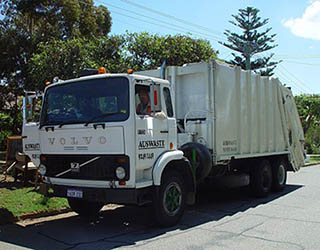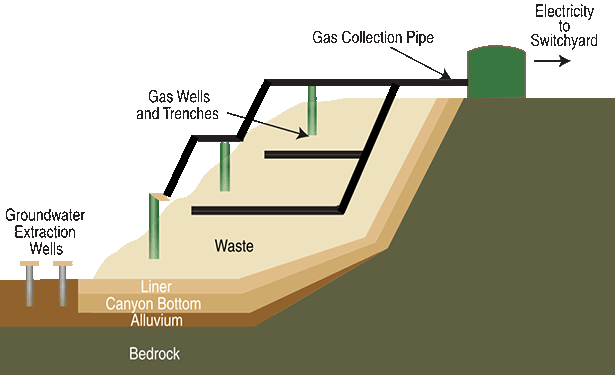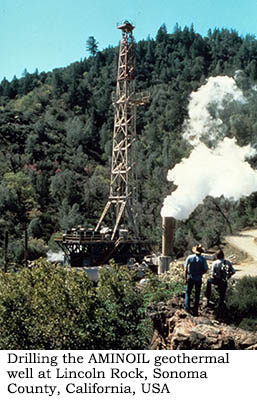Learn

Biomass Energy
 Biomass energy is energy that is trapped in plants and animals. Biomass fuel is organic material that comes from living organisms. This type of energy can be the organisms themselves or waste or other products that come from these living things. Examples of biomass fuels are
Biomass energy is energy that is trapped in plants and animals. Biomass fuel is organic material that comes from living organisms. This type of energy can be the organisms themselves or waste or other products that come from these living things. Examples of biomass fuels are
- wood,
- crops,
- garbage,
- landfill gas,
- animal wastes, and
- alcohol fuels.
One method of generating energy from biomass sources is by burning the organisms or waste products that they produce. Biomass fuel, such as wood and charcoal, come from plant material. Plants absorb energy from the sun through the process of photosynthesis. This energy is trapped within the plants and can be released to do work when the material is burned.
Animals obtain their energy from consuming plants. This energy is trapped in chemical bonds within the animals. When organic material, such as plants and animals are burned the energy trapped inside is released as heat which can be used to generate electricity or as a heating source.

MSW
 Municipal Solid Waste (MSW), also known as garbage, is another example of biomass that can be burned to release heat energy to generate electricity.
Municipal Solid Waste (MSW), also known as garbage, is another example of biomass that can be burned to release heat energy to generate electricity. Solid municipal wastes contain biomass material such as paper, cardboard, grass clippings, leaves, wood, leather, and other non-biomass combustible materials such as synthetic petroleum products.
About 85% of household trash is material that will burn. MSW is burned at special waste-to-energy plants that use the heat from burning these materials to make steam to generate electricity or to heat buildings. Burning MSW serves two purposes — it provides a source of renewable energy and it also helps decrease the amount of solid waste that is stored in landfills.

Methane
Another source of biomass fuel is also generated from garbage in landfills. Because much of the trash that we produce is organic (plant and animal based) it decomposes. As organic material decomposes, it releases the carbon compound methane. You should remember from previous lessons that methane is the major component of natural gas.
This natural gas that is produced from decomposition of organic material in landfills is called landfill gas or biogas. Large landfills capture this gas and use it as a source of energy to generate electricity.

Diagram showing the collection of biogas from a landfill.
View larger version.

Crops
Crops can also be used as sources of biomass energy. Crops such as corn, sugar cane, soy beans, and palm oil trees can be used to produce liquid biofuels — ethanol and biodiesel. These products are alcohols that are produced when plant material undergoes fermentation.

Ethanol in gasoline comes from these corn fields
Visit University of Illinois Extension: Ethanol. Pay particular attention to the "What is It", "How is it Produced", and "How is it Used" sections.

Advantages/Disadvantages of biomass energy
Pros
Like solar energy, biomass energy has both positive and negative aspects when compared to fossil fuel use.
- Biomass energy is thought to be much cleaner burning than fossil fuels. Since biomass is organic (has a carbon base), carbon dioxide is released into the atmosphere but this is carbon dioxide that has been absorbed from the atmosphere. When the biomass energy source is growing, it takes carbon dioxide from the environment to carry out photosynthesis. So it is part of the natural cycling of carbon, unlike emissions from fossil fuels.
- Another positive about biomass energy is that it is a source of renewable energy and reduces our dependency on fossil fuels. Biomass fuels are abundant and come from living sources, and life is cyclical providing an almost limitless supply of energy.
Cons
Biomass energy also has its drawbacks.
- When compared to fossil fuels, biomass energy is an inefficient source of energy. It takes more matter to produce an equal amount of energy as coal.
- It is also an expensive source of energy. It is expensive to take care of and raise the living things that are being used.
- The technology to use the biofuels is also more expensive.
- Although the carbon dioxide released from biomass energy is less than that of fossil fuels, there is still a byproduct that is produced from its combustion—methane. Methane is believed to destroy the earth's ozone layer [protects the earth from ultraviolet radiation].
Like with all sources of energy, the positive and negatives have to be weighed to help make a wise decision. Most often a combination of energy sources is the best option.

Geothermal Energy
Geothermal energy is a source of renewable energy that comes from the heat within the earth's crust. This type of energy source can help heat homes and produce electricity. The heat source for geothermal energy comes from molten rock, called magma, located within the earth's crust. This magma can directly heat water sources. The heat flows outward toward the surface. When this happens you get natural phenomena such as, volcanoes, geysers, and hot springs.
Not all areas can easily access geothermal energy. The areas that have the most reliable sources of geothermal energy are normally geologically active areas areas along fault lines that often experience earthquakes or volcanoes. This is because the faults allow the magma to reach farther up in the earth's crust . In the United States, most geothermal reservoirs, where the water is directly heated by magma, are located in the western states, Alaska, and Hawaii. Even in these areas, this source may not be reliable because the heated water is used faster than it can be naturally replaced. Water sources that are directly heated by magma occur at about 1,500 to 10,000 meters within the earth's crust.

Another type of geothermal energy is from water that is heated indirectly by the magma. The magma heats rocks deep within the earth's crust which in turn heat deep circulating groundwater sources. This type of geothermal energy is called hot dry rock sources. Geothermal Energy: Harnessing the Power of the Earth (7:36) gives an overview of geothermal energy. PBS login information. These sources exist in the earth's crust at depths from three to five miles.
Geothermal energy is often referred to as a non-renewable renewable resource. This is because geothermal sources are not always readily available often depends on geographic location in all areas. Also, this type of energy source may run out in certain areas if over used. Geothermal energy is thought to be a good alternative to fossil fuels. With this type of energy, there are no emissions of harmful greenhouse Another negative aspect of using geothermal energy to generate electricity is the fact that the technology is often very expensive on initial startup.
 |
 |